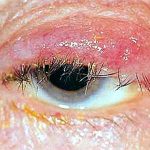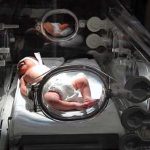Anemia (derived from the Greek an – negative particle and h?ima – blood, hereinafter – “A.”) – is anemia, a group of disease[ru] characterized by reduced hemoglobin content in red blood cells (dye blood carries oxygen), the number of red blood cells per unit volume human blood given gender and age, and the total weight of blood in the human body. A number of causes painful changes due to impaired supply of oxygen. The intensity of these symptoms depends on the degree of anemia and on the speed of its development.
The most important general symptoms of anemia – fatigue, pale skin, shortness of breath, dizziness, tendency to faint. A. caused by three main factors: blood loss, impaired hematopoiesis, and increased kroverazrushenie.
A. associated with acute blood loss develops with wounds, gastrointestinal, pulmonary, nasal, uterine, less renal hemorrhage. A. At this suddenly appear sharp pallor, dizziness, tinnitus, thirst. It will not be life-threatening conditions, one should immediately stop bleeding that often requires surgical intervention, use styptics, blood transfusions.
A common cause of anemia – deficiency in iron, so iron is called A. Iron is part of hemoglobin and red blood cell enzymes involved in cellular respiration and is almost out of the body. Iron deficiency is caused by a small, but frequent blood loss (heavy and prolonged menstrual periods, bleeding hemorrhoids, etc.). A. very often this develops, if chronic blood loss combined with reduced secretion of gastric juice, which can reduce the absorption of iron in food. A. iron deficiency often occurs in children in the first year if the mother lacked the iron in the body. A. the same form is sometimes found in premature infants who did not manage to obtain the necessary amount of iron from the mother. A. iron deficiency may develop during puberty in girls born to mothers with iron deficiency in the body – juvenile chlorosis (“chlorosis” greensickness). For chlorosis, in addition to general attributes, A., characteristic hair loss, brittle nails, taste perversion (the desire to eat chalk, tooth powder, coal, slate from pencils), micturition disorders (bed wetting, frequent urge to urinate). Treatments for iron A. conduct various preparations of iron in combination with ascorbic acid (in this combination are better absorbed).
There are forms of anemia in which the body enough iron, but it is not fully used for the formation of hemoglobin due to the decreased activity of enzymes that form hemoglobin (sideroahresticheskaya A.). A. These are hereditary or associated with lead poisoning. When these forms of A. has a curative effect vitamin B6. Treats lead poisoning. Violation of blood formation is observed with a deficiency of vitamin B12 (vitamin deficiency B12, anemia Addison – Biermer, old name – A pernicious, pernicious anemia). A. the reason for this – a violation of the stomach making a special protein – gastromukoproteina (biermerin) providing intestinal absorption of vitamin B12. A lack of vitamin B12 in the body may be in patients who in the past has been removed the entire stomach, and also in patients with parasitic infestations, particularly broad tapeworm. When B12 vitamin deficiency in the body is disturbed formation of ribonucleic acid (RNA) needed for cell reproduction. As a result of broken blood, red blood cells increase in size, their number in blood volume decreases. Due to the increase of the epithelial cells of the epithelium changes the structure of language, what is connected with his pain, and sometimes the spinal cord is affected. In 1926 he was invited to this form of anemia raw liver, from which was subsequently isolated vitamin B12 – the main remedy for anemia Addison-Biermer.
Hemodyscrasia, expressed in the perversion of education in the bone marrow progenitor cells that form red blood cells, white blood cells and platelets, leading to the development of hypoplastic and aplastic A. For hypoplastic A characteristic decrease in the number per unit volume of blood red cells, white cells and platelets. In this form of anemia have a therapeutic effect hormones (glucocorticoid and male sex hormones), sometimes – removal of the spleen. Also used bone marrow transplantation.
Hemolytic anemia caused by increased hemolysis (destruction of red blood cells). Usually red blood cells live about 120 days. When the patient’s own antibodies against erythrocyte lifespan of red blood cells is much shorter. There is a rapid destruction of a large number of red blood cells due to the decaying of hemoglobin in patients are icteric staining tissues (jaundice). Developing immune hemolytic A., which is used to treat hormonal drugs (glucocorticoid hormones). Sometimes the birth of the child develops an acute hemolytic A., due to incompatibility of blood between mother and child (hemolytic disease of the newborn). Of hemolytic A. significant place hereditary forms. Their development is associated with a genetic dysfunction of enzymes involved in the formation of red blood cell membranes, or the accumulation of the energy necessary for their livelihoods and conservation of the shell.
In hereditary hemolytic anemia treatment effect sometimes makes removal of the spleen. In hereditary deficiency in the erythrocytes of certain enzymes (dehydrogenase, glucose-6-phosphate, etc.) lose their ability to counteract the harmful effects on vital cell processes of individual drugs, certain foods and other substances. In these patients, after administration of even small doses of acetylsalicylic acid (aspirin), streptotsida, quinine, by eating certain legumes and even if swallowed pollen of these plants have severe hemolytic A., which is more common in people living in Africa, of the Mediterranean basin, and in the CIS countries – in the southern republics.
In those geographic areas are common hereditary anemia associated with violation of the synthesis of the protein hemoglobin. A. These forms are called hemoglobinopathies. Red blood cells in some forms of the disease have sickle-shaped (crescent A.), sometimes – the target (mishenevidnokletochnaya A.).
Treatment of all types of anemia can be conducted only after a precise diagnosis and form A.).










